Best Places to See Winter Wildlife
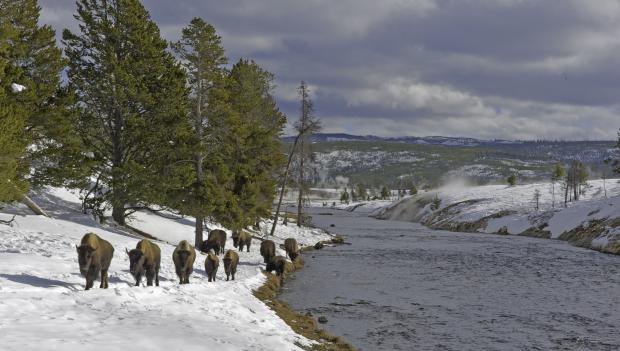
Put on your layers and head out into the cold to see some truly magnificent wildlife this winter. This is the time of year to sight some magical species - like the snowy owl - or experience wildlife in a new way such as wolves hunting in the snow. Below are our five best places to see winter wildlife.
Recommended: Unique Wildlife Viewing Experiences in America
1. Snowy Owl
Where to Go: Rochester KOA, New York
Snowy owls have earned an almost mythic status among birdwatchers. Also known as the polar owl, white owl, and Arctic owl, this large owl can be easily identified by its stunning plumage of mostly white feathers with sparse brown bars and spots. Snowy owls are native to the Arctic where they breed. Some stay far north year-round, while other snowy owls will migrate south to the northern United States, namely in the Great Lakes region and New England. Some of the best places to see this winter wildlife include upstate New York.
Unfortunately, these beloved owls are threatened by climate change impacts on habitat and prey. There are only 30,000 snowy owls left in the world, making it extremely difficult to spot them in the wild. In winter, look for them along the shorelines of lakes and the ocean, or in wide open spaces like agricultural fields and airports. They often perch on short rises like fence posts, telephone poles, or the crests of dunes. When in flight, they typically remain near the ground.
Snowy owls have frequently been sighted in the Rochester area, often at the airport. The Rochester KOA has plenty of RV spots and some cabins on the property that includes a lovely reflecting pond.
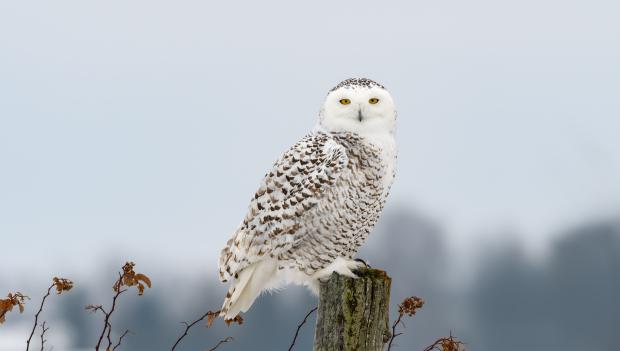
2. Gray Wolves
Where to Go: Harriman State Park, Idaho
Wolf packs once roamed the entirety of North America, from the tundra to the highlands of Mexico. These canines are characterized by their large head, long legs, and bushy fur that may be gray, mottled gray and black, or entirely black. Gray wolves can weigh as much as 165 pounds and stand 2 to 3 feet tall at shoulder height.
Sadly, the demise of the wolf was nearly complete by the early 1900s due to habitat loss and extermination programs. In 1973, the U.S. government designated the Greater Yellowstone Ecosystem as one of three recovery areas for the wolf. In the mid-1990s, 41 wild wolves from Canada and northwest Montana were released in Yellowstone. In the nearly 30 years since their introduction, wolves have enhanced the ecosystem in a number of ways. They have rebalanced elk and deer populations, allowing the return of willows and aspen, and reducing overgrazing of grasslands that have stabilized riverbanks and rerouting rivers to flow in new directions.
Wolves can best be spotted in Yellowstone National Park, where they are protected and therefore less skittish around humans. The area is currently home to eight wolf packs totaling about 95 wolves. Your best time to see them is during dusk or dawn when they are most active. You will have the greatest success sighting gray wolves in the Lamar Valley, Hayden Valley, the Canyon Area, and on Blacktail Plateau. Wolves flourished in these parts thanks to a bountiful prey population of elk and deer. Generally, speaking Yellowstone park is one of the best places to see winter wildlife, wolves, or other species.
Stay at Harriman State Park, just 45 min drive to the entrance of Yellowstone. There is plenty to do in and near the park, which has many sites, including yurts and houses for rent.
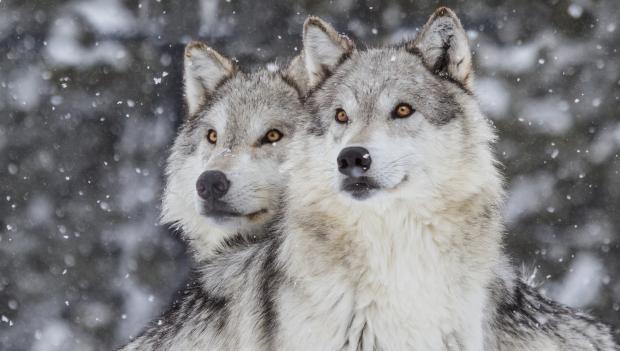
Recommended: Snowboard and Ski Cabin Trip Ideas
3. Migratory Birds
Where to Go: South Padre Island KOA, Texas
South Padre Island is located on the Central Flyway, a major migration route connecting North, Central, and South America. Its important status as a migration point makes it a bird-watching paradise. More than 380 species of birds have been found here - nearly half of all bird species documented in North America!
On this island, you can spot sandhill cranes, snow geese, redhead ducks, and several other birds that fly south from northern nesting habitats for a balmy winter. There are plenty of year-round species, like the Black, White-tailed Hawk, and Eastern Meadowlark.
The island has a variety of habitats that are critical to the health of bird populations. Some rare and fragile habitats, like wind-tidal flats, provide the abundance of food that migratory birds need to sustain their journey. Other critical bird habitats found include beaches, coastal prairie, dunes, grasslands, wetlands, and ponds.
The island is so important for the welfare of our feathered friends it has been designated as a Globally Important Bird Area by the American Bird Conservancy and a Site of International Importance by the Western Hemisphere Shorebird Reserve Network.
Migratory bird watchers can stay right on the island at the South Padres Island KOA with plenty of amenities and sites to reserve.
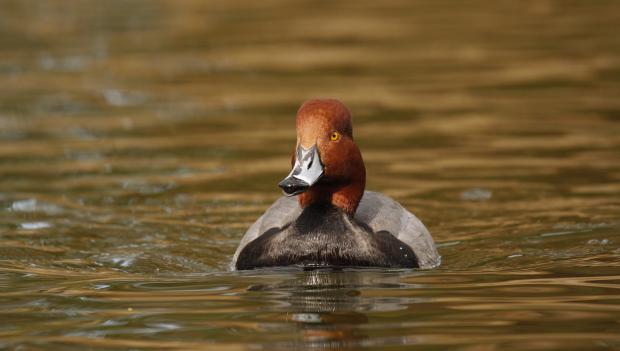
4. Caribou
Where to Go: Chena River State Recreation Area, Alaska
Caribou, also called reindeer, are known for their massive antlers. In fact, caribou are the only member of the deer family where both males and females grow antlers, with the adult bulls showcasing massive displays and the adult cows having slender, irregular sets. Did you know that the caribou’s large, concave hoofs spread widely to support them in the snow and function as paddles for when they need to swim?
Typically caribou herds stay far north in the summer, along the tundra and away from pestering mosquitos. Come fall, many herds move south into the boreal forests of the Alaskan interior, searching for lichen and dried sedges for sustenance.
While you can encounter caribou any time of year, there is nothing quite as magical as seeing the animals in the snow. During the winter, they often shovel with their hooves, digging in the snow for lichens.
Chena River State Recreation Area is a massive public use area about twenty-five miles east of Fairbanks in the boreal forest. It is open year-round and makes a grand winter destination with snow-blanketed forests, rivers, and alpine tundra. You also have good odds of seeing moose and wolves here, making it one of the best places to see winter wildlife. The park has thirteen sites including an ice hut and eleven public-use cabins.

Recommended: Some of the Best Natural Hot Springs in North America
5. Ermine (“Winter Weasels”)
Where to Go: Tobyhanna State Park, Pennsylvania
Pennsylvania is home to another one of the best places to see winter wildlife in the northeastern US. Ermines, also known as winter weasels or short-tailed weasels, have coats that transform from light brown to white come the shorter days of winter; however, the winter whitening is largely dictated by latitude. Weasel populations in northern latitudes turn white during the winter, while those in mid-latitudes occasionally don snow coats. Weasels in southern locales remain brown year-round.
Winter weasels can be found in many environments, including open woods, meadows, and suburban areas. They live in underground burrows, often around rocks or under large brush piles made into dens. They hunt under the snow in prey tunnels and are top-rate hunters, sometimes taking down prey twice their size. Although ermines are elusive, spotting their adorable little faces and seeing their curious behavior is often well worth the effort.
One place to see a winter weasel is Tobyhanna State Park. Located in the Pocono Plateau, this rugged highland has dark evergreen forests, bogs, and a diversity of animals and plants that are perfect for weasel life. There are 136 sites for rent, and the park is open year-round.
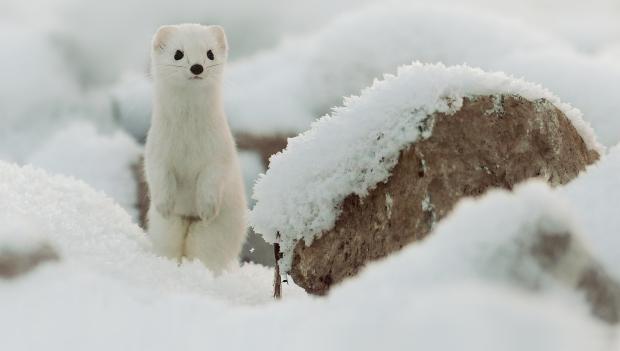
Are you ready for your adventure? Plan your camping trip!